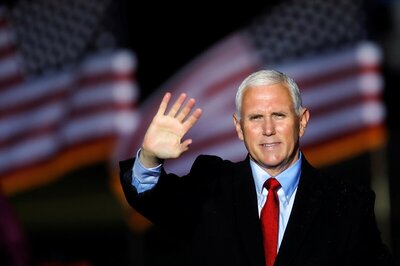
views
(By KailashSatyarthi, Nobel Peace Prize Laureate, and Monique Villa, CEO Thomson Reuters Foundation)
As you read this article, 5.5 million children around the world are losing their childhood to slavery. They are being beaten, abused, and sometimes raped. They are forced to work in brothels, mines, brick kilns, on fishing boats, and in hotels. They work behind closed doors as domestic labourers. Many are forced to become soldiers, brides, and drug dealers.
Child slavery is at an all-time high. Every day, children as young as five are sold on the black market at prices lower than cattle. Once in the hands of their new masters, they are forced to work for up to 20 hours a day. Girls are particularly at risk, as they are the most vulnerable to sexual exploitation, one of the most lucrative forms of slavery.
While globalisation has done much to bring down the barriers between nations, it has also fuelled an unprecedented demand for slave labour. Have you ever thought that part of the phone that you use, the shoes that you wear, or the tea that you drink, might have been produced by child slaves?
The vast majority of slavery victims are confined to the shadows of our societies. They are unseen, but they are there. Their suffering fuels an evil web of trafficking, debt bondage, prostitution, child pornography and other forms of illicit activities. Trafficking is living hell on earth, and it's worth $150 billion a year, significantly more than the annual turnover of some of the world's most profitable companies.
If we want to eradicate child slavery we must take a global approach to what is clearly a global issue. That's why we are calling for the eradication of child slavery and all forms of child labour to be included in the post 2015 Sustainable Development Goals.
Business, government and civil society must speak the same language, and work together to agree on bold and innovative solutions. It requires efforts from all sides.
Education is the starting point. All children, regardless of their ethnicity, gender, religion and ability, have the right to be educated, and governments must take concerted efforts to ensure that schooling for all children is a global priority. Innovative methods should be explored to bridge the gap in financing for educationto ensure that all children are in school and learning.
Law enforcement machinery needs a substantive overhaul. Besides capacity building to deal with cases related to trafficking of children, corrupt officials - from senior to the most junior - are the key allies of traffickers and abusers.
Businesses must ensure that their supply chains are free from child labour and all forms of slavery. Too many of them are either unaware, or actively choose to ignore what goes on at the root of their supply chains. And we, as consumers, must demand guarantees that what ends up in our shopping bags is not the result of child exploitation.
If we use markets as a force for good, we will see change happening at a much faster pace. Governments can take years to pass laws, and perhaps take yet longer to enforce them, while major corporations have the capacity to ensure that there are no human rights violations in their supply chains much quicker, making a real impact across the world and positively changing the lives of millions of human beings in the process.
At the same time, there should be real incentives for companies deciding to tackle slavery; it's unrealistic to expect that corporations will spend money to monitortheir supply chains if competitors who choose to do nothing get away with it and rakein even more profit.
We are failing a generation of children. We are denying them the chance of a life. So, together, we must standup and take action to put an end to child slavery, the scourge of our times. Together we can. Choose to see.
(End Child Slavery Week is a global initiative aimed at eradicating forced labourand child slavery in all its forms by 2025. To sign the petition and for more info visit endchildslaveryweek.org and choosetosee.org)




















Comments
0 comment